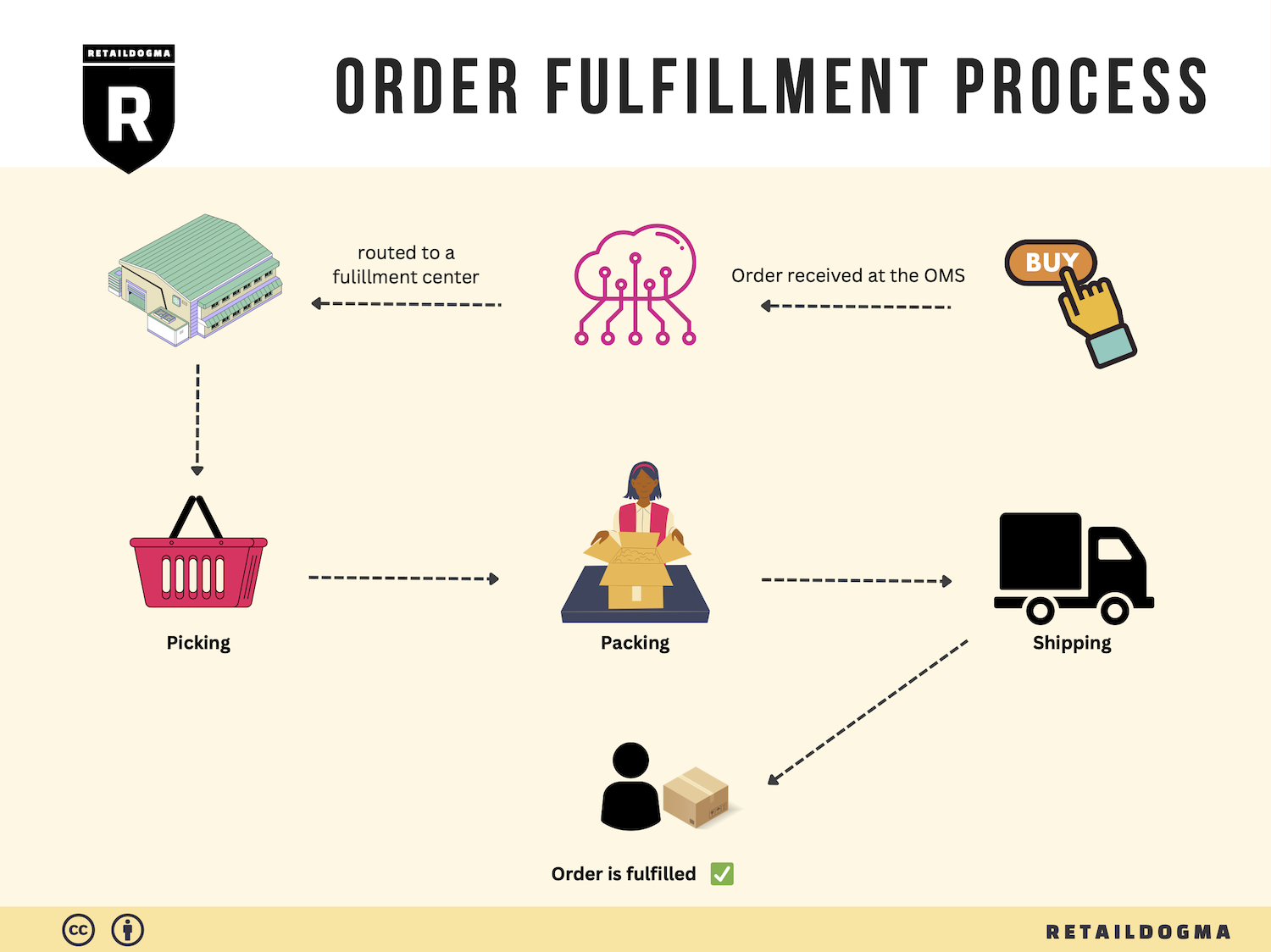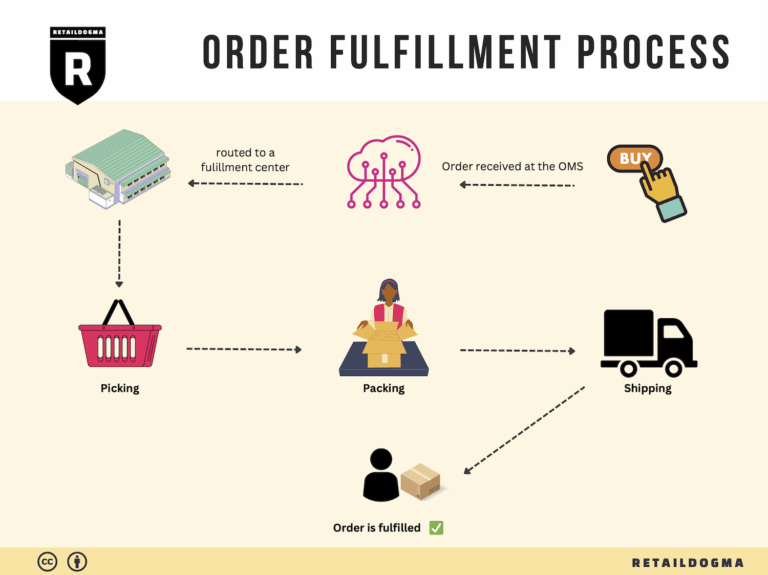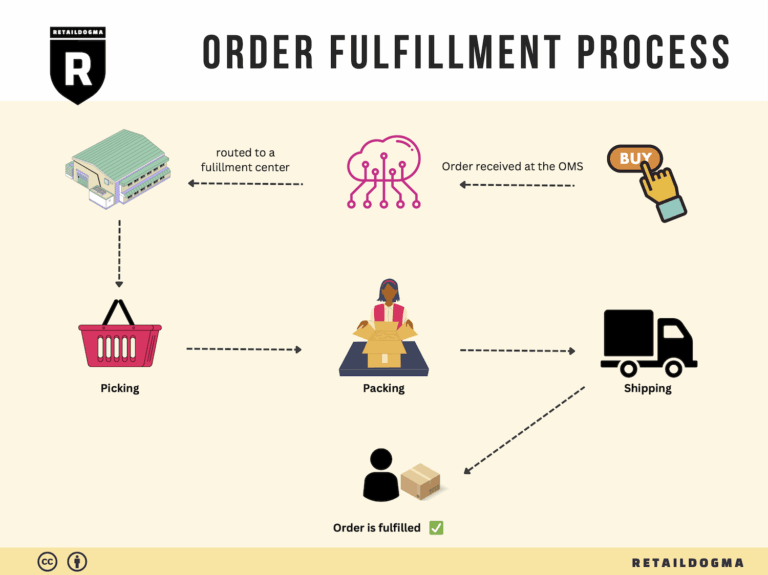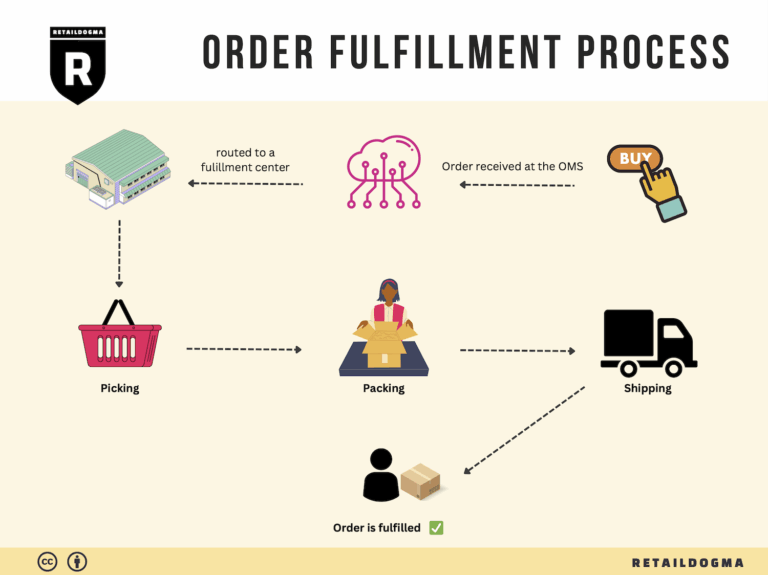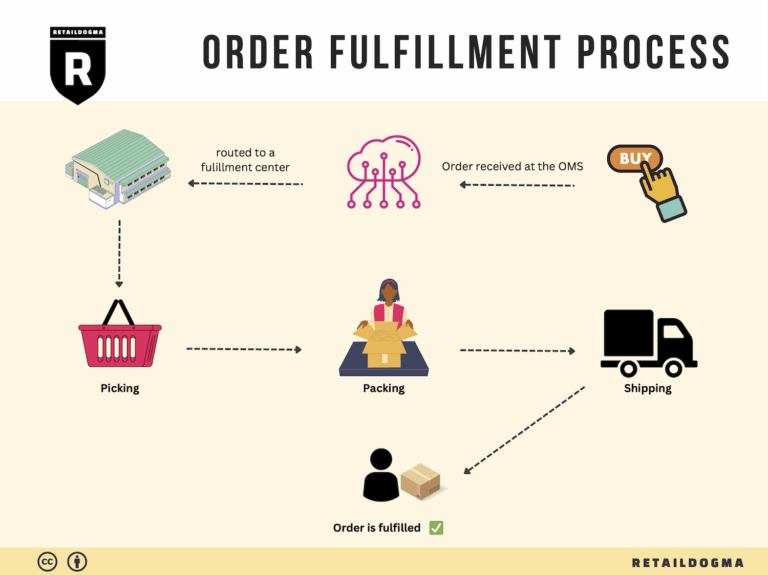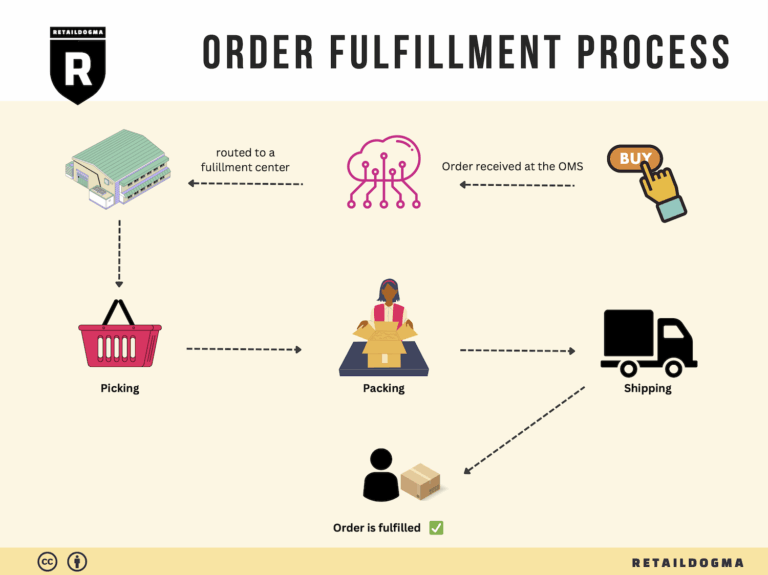Ecommerce Fulfillment Services: The Ultimate Guide (2025)
What is E-commerce Fulfillment? An Introduction for Growing Businesses
As e-commerce businesses expand, many owners find themselves grappling with a common challenge: the overwhelming task of packing and shipping orders. The excitement of growing sales can quickly turn into stress as logistics become more complex. Managing inventory, ensuring timely deliveries, and maintaining customer satisfaction while juggling these demands can feel like an uphill battle.
Understanding E-commerce Fulfillment
E-commerce fulfillment is essentially the process of getting a product from your inventory to your customer’s doorstep. It encompasses everything from receiving and storing products to picking, packing, and shipping orders. For growing businesses, understanding the nuances of fulfillment is crucial for scaling operations without compromising service quality.
What This Guide Covers
This guide aims to demystify e-commerce fulfillment and provide actionable insights for business owners looking to enhance their logistics. We will explore various fulfillment models, including third-party logistics (3PL) and Fulfillment by Amazon (FBA), to help you determine which option aligns best with your business needs. Each model has its advantages and potential drawbacks, and understanding these will empower you to make informed decisions.
Core services that are integral to fulfillment operations will be outlined, such as warehousing, order processing, packaging, shipping, and returns management. We will also discuss how to choose the right fulfillment partner, considering factors like location, technology integration, customer service, and scalability.
Pricing is another critical aspect we will cover, as it can significantly affect your bottom line. Understanding the cost structures associated with different fulfillment models will enable you to budget effectively and select a partner that offers the best value for your specific needs.

The Goal of This Guide
Ultimately, this guide aims to empower e-commerce businesses to make smart, strategic decisions regarding their logistics. By understanding the intricacies of fulfillment, you can streamline operations, reduce costs, and enhance customer satisfaction—all essential components for sustainable growth in the competitive e-commerce landscape. Whether you are just starting or looking to optimize your existing fulfillment processes, the insights provided here will equip you with the knowledge needed to thrive.
What You’ll Learn In This Guide
- What is E-commerce Fulfillment? An Introduction for Growing Businesses
- The Order Fulfillment Process: From ‘Buy’ Button to Customer’s Door
- Comparing Fulfillment Models: In-House vs. 3PL vs. Dropshipping
- A Deep Dive into Amazon FBA: Pros, Cons, and Who It’s For
- Core Services Offered by Fulfillment Centers
- How to Choose a Fulfillment Partner: A 6-Point Checklist
- Understanding Fulfillment Pricing: A Breakdown of Common Fees
- Frequently Asked Questions (FAQs) about Fulfillment
- Conclusion: Is Outsourcing Fulfillment the Right Move for Your Business?
- Important Disclaimer
The Order Fulfillment Process: From ‘Buy’ Button to Customer’s Door
1. Receiving Inventory
The first step in the order fulfillment process is receiving inventory. This involves the delivery of products from suppliers to your warehouse or fulfillment center. Upon arrival, the inventory must be checked against purchase orders to ensure accuracy in quantity and quality. Each item is typically assigned a Stock Keeping Unit (SKU), a unique identifier that facilitates tracking and management throughout the fulfillment process.
Importance: Proper inventory receiving is crucial for maintaining accurate stock levels and avoiding discrepancies that can lead to fulfillment delays or errors. If products are not accounted for correctly, it can result in stockouts or overstock situations, both of which can negatively impact customer satisfaction and sales.
2. Warehouse Storage
Once inventory is received and verified, the next step is warehouse storage. This involves strategically placing products in designated areas within the warehouse to optimize space and accessibility. Effective warehouse management systems (WMS) play a vital role in organizing products based on factors such as demand frequency, size, and category.
Importance: Efficient storage solutions enhance the speed and accuracy of the order picking process. By utilizing methods such as bin shelving and pallet racking, businesses can maximize storage capacity while ensuring that high-demand items are easily accessible. This organization ultimately contributes to a smoother workflow and reduced lead times in order fulfillment.
3. Order Picking
Order picking is the process of selecting items from the warehouse to fulfill customer orders. This step typically involves using pick lists, which outline the specific items and quantities needed for each order. Staff may utilize various picking methods, such as single order picking, batch picking, or zone picking, depending on the volume and complexity of orders.
Importance: Efficient order picking is essential for timely fulfillment. The faster and more accurately items are picked, the quicker they can be packed and shipped to customers. Mistakes in this phase can lead to incorrect orders being sent out, resulting in returns, exchanges, and potential damage to customer relationships.
4. Order Packing
After items are picked, they move to the packing stage. Here, products are carefully packed into boxes or containers, often using packing slips to ensure all items are included. Packaging materials should be chosen based on the nature of the products to protect them during transit. Additionally, businesses should consider branding opportunities during this phase, such as branded tape or custom packing inserts.
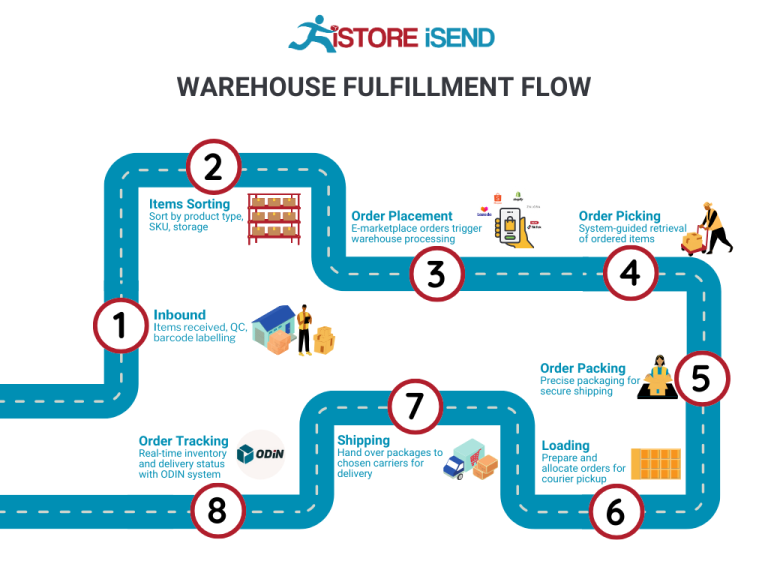
Importance: Proper packing not only protects items from damage but also enhances the unboxing experience for customers. A well-packed order can lead to higher customer satisfaction and encourage repeat business. Moreover, effective packing can reduce shipping costs by minimizing dimensional weight, ensuring that businesses maximize their shipping efficiency.
5. Shipping & Delivery
The final step in the order fulfillment process is shipping and delivery. Once packed, orders are labeled and handed over to shipping carriers for delivery to the customer. Businesses must choose the right shipping methods and carriers based on factors like cost, speed, and reliability. Key performance indicators (KPIs) such as on-time delivery rates should be monitored to evaluate shipping effectiveness.
Importance: The shipping and delivery phase is critical for customer satisfaction. Timely and accurate delivery can significantly influence customer perceptions of your brand. Moreover, providing customers with tracking information allows them to monitor their orders, which can reduce inquiries and improve their overall experience. A streamlined shipping process can also lead to cost savings and improved profit margins.
In summary, a well-structured order fulfillment process is essential for e-commerce businesses aiming to scale operations efficiently. Each step, from receiving inventory to shipping, plays a vital role in ensuring that customers receive their orders accurately and on time, ultimately contributing to the success and growth of the business.
Comparing Fulfillment Models: In-House vs. 3PL vs. Dropshipping
Fulfillment Model Comparison
| Model | Who Handles Inventory | Best For (Business Stage) | Key Advantage | Key Disadvantage |
|---|---|---|---|---|
| In-House Fulfillment | The business itself | Established businesses with stable sales | Full control over inventory and processes | High upfront costs and operational complexity |
| Third-Party Logistics (3PL) | A third-party provider (like TF Fulfillment) | Startups and growing businesses | Scalability and expertise in logistics | Less control over the fulfillment process |
| Dropshipping | Supplier or manufacturer | New businesses or low-risk models | Low upfront investment and no inventory risk | Lower profit margins and less control over shipping |
In-House Fulfillment
In-house fulfillment involves managing all aspects of inventory and order processing within your own facilities. This model is typically adopted by established businesses that have a stable sales volume and are capable of investing in infrastructure, technology, and human resources. One of the main advantages of in-house fulfillment is the complete control it provides over inventory management, order processing, and shipping. Businesses can tailor their operations to fit specific customer needs, maintain quality standards, and respond quickly to changes in demand. However, this model comes with significant disadvantages, including high initial costs for warehousing, labor, and technology. Additionally, managing logistics can become complex as the business scales, requiring extensive operational expertise and potentially leading to inefficiencies if not handled correctly.
Third-Party Logistics (3PL)
Third-party logistics (3PL) providers, such as TF Fulfillment, offer businesses the opportunity to outsource their warehousing and fulfillment needs to specialized companies. This model is particularly beneficial for startups and growing businesses that may not have the resources or expertise to manage fulfillment in-house. 3PL providers bring scalability to the table, allowing businesses to adjust their logistics operations based on demand without the burden of managing inventory directly. They often have established networks and infrastructure, providing competitive shipping rates and faster delivery times. However, outsourcing fulfillment means that businesses have less control over the processes, which can lead to challenges in maintaining quality and consistency. It’s crucial for businesses to choose a reliable 3PL partner that aligns with their brand values and customer expectations.
Dropshipping
Dropshipping is a fulfillment model where businesses sell products without holding any inventory. Instead, when a customer places an order, the business purchases the item from a supplier who then ships it directly to the customer. This model is particularly appealing for new businesses or entrepreneurs looking to minimize risk and investment. The key advantage of dropshipping is the low upfront costs, as there is no need to purchase inventory or manage a warehouse. This flexibility allows for a broad product range without the financial commitment of traditional inventory management. However, dropshipping comes with its own set of challenges, primarily lower profit margins and limited control over shipping times and product quality. Additionally, reliance on suppliers means that businesses must carefully vet their partners to ensure reliability and maintain customer satisfaction.
Conclusion
Choosing the right fulfillment model is critical to the success of an e-commerce business. Each model—whether in-house fulfillment, third-party logistics, or dropshipping—offers unique advantages and challenges that can significantly impact operational efficiency, customer satisfaction, and profitability. E-commerce entrepreneurs and operations managers should carefully assess their business needs, growth plans, and available resources before making a decision. By understanding the nuances of each model, businesses can position themselves for sustainable growth and improved customer experiences in an increasingly competitive marketplace.
A Deep Dive into Amazon FBA: Pros, Cons, and Who It’s For
Understanding Fulfillment by Amazon (FBA)
Fulfillment by Amazon (FBA) is a service offered by Amazon that allows sellers to store their products in Amazon’s fulfillment centers. Amazon takes care of storage, packaging, and shipping of the products directly to customers. This service has become a cornerstone for many e-commerce businesses, particularly those looking to scale quickly and efficiently.
When a customer places an order for a product listed with FBA, Amazon handles the entire fulfillment process, including inventory management, packing, shipping, and customer service. Sellers benefit from Amazon’s logistics network and its extensive customer base, making it an attractive option for many entrepreneurs and established brands alike.
How FBA Works
-
Sign Up and Setup: Sellers need to create an Amazon seller account and enroll in the FBA program. They will then set up their product listings to indicate that they are using FBA.
-
Inventory Shipment: Sellers send their products to Amazon’s fulfillment centers. They can choose to send their entire inventory to a single location or distribute it across multiple centers based on Amazon’s recommendations.
-
Storage and Handling: Once the products arrive, Amazon stores them in its warehouses. The company is responsible for managing inventory levels and ensuring that products are stored safely.
-
Order Fulfillment: When a customer orders a product, Amazon picks, packs, and ships the item directly to the customer. This process is typically completed within 24 hours.
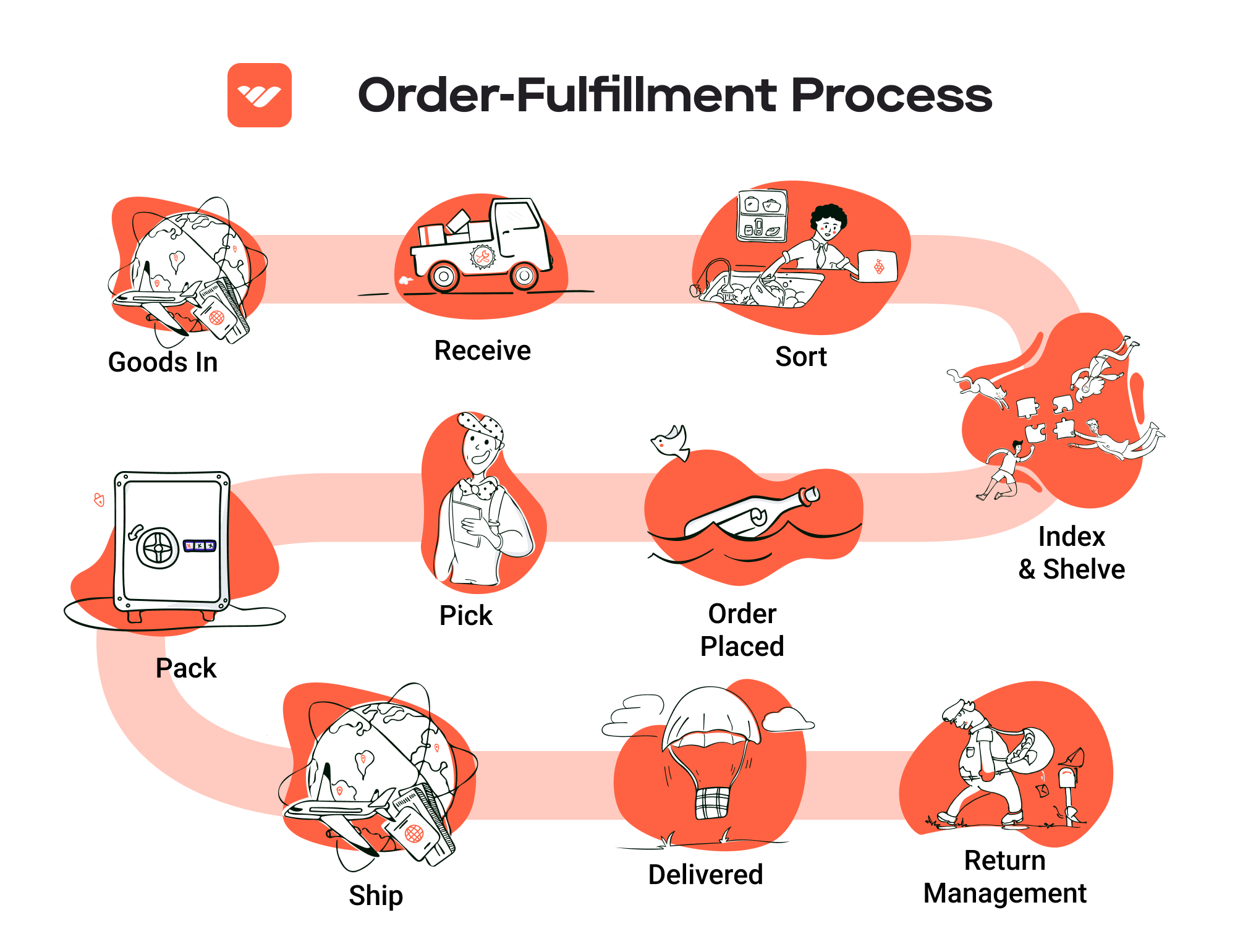
-
Customer Service and Returns: Amazon also handles all customer service inquiries and returns related to FBA products, allowing sellers to focus on other aspects of their business.
Pros of Using Amazon FBA
-
Prime Eligibility: Products fulfilled through FBA are eligible for Amazon Prime, which significantly enhances visibility and sales potential. Prime members often prefer to purchase Prime-eligible products due to faster shipping options.
-
Customer Trust: Amazon’s reputation for reliability and customer service extends to FBA sellers. Customers are more likely to purchase from sellers using FBA due to the assurance of quality service and easy return policies.
-
Multi-Channel Fulfillment: FBA allows sellers to fulfill orders not only from Amazon but also from other sales channels, such as eBay, their own e-commerce websites, and more. This flexibility can streamline operations and improve efficiency.
-
Scalability: FBA enables sellers to scale their businesses quickly without needing to invest heavily in logistics and warehousing. Amazon’s vast network allows for rapid growth as demand increases.
-
Time Savings: By outsourcing the fulfillment process, sellers can focus on marketing, product development, and customer engagement, rather than the intricacies of inventory management and shipping logistics.
Cons of Using Amazon FBA
-
High Fees: FBA comes with various fees, including storage fees and fulfillment fees, which can add up quickly, particularly for low-margin products. Sellers need to carefully calculate these costs to ensure profitability.
-
Strict Inventory Rules: Amazon has specific inventory management policies that sellers must adhere to, including guidelines on product packaging, labeling, and expiration dates. Failure to comply can result in penalties or even account suspension.
-
Commingling Risks: When using FBA, inventory from different sellers may be commingled in Amazon’s warehouses. This means that a seller could receive returns or replacements of their products that belong to another seller, leading to potential quality control issues.
-
Limited Control: Sellers have limited control over the fulfillment process once their products are in Amazon’s hands. This includes inventory visibility and the handling of customer service issues, which can be frustrating for some sellers.
-
Dependency on Amazon: Relying heavily on FBA means that sellers are vulnerable to changes in Amazon’s policies, fee structures, or market dynamics. This dependency can pose risks to long-term business sustainability.
Who is FBA Best For?
Fulfillment by Amazon is particularly well-suited for:
-
Startups and Small Businesses: Those looking to enter the e-commerce market quickly without the overhead costs associated with warehousing and logistics can benefit from FBA’s streamlined processes.
-
Established Brands: Brands that wish to expand their online presence without significantly investing in infrastructure can leverage Amazon’s vast distribution network to reach a wider audience.
-
Sellers with High Volume: Businesses that have a high volume of sales or seasonal spikes in demand can utilize FBA to manage logistics efficiently, ensuring that they can meet customer expectations without strain.
-
Entrepreneurs Focused on Growth: Sellers who want to focus on scaling their business rather than the complexities of fulfillment will find FBA a valuable tool for growth.
In conclusion, while Fulfillment by Amazon offers numerous advantages in terms of reach, efficiency, and customer trust, it also comes with its own set of challenges. Sellers should carefully consider their business model, product types, and growth strategies to determine if FBA aligns with their operational goals.
Core Services Offered by Fulfillment Centers
Inventory Management & Warehousing
Inventory management and warehousing are foundational services provided by fulfillment centers, crucial for the smooth operation of e-commerce businesses. This service encompasses the storage, organization, and tracking of products within a secure, climate-controlled environment. Fulfillment centers utilize sophisticated inventory management systems that allow for real-time visibility of stock levels, ensuring that businesses can monitor their inventory accurately.
Benefits:
-
Space Optimization: By leveraging a fulfillment center’s warehousing capabilities, e-commerce businesses can free up valuable space in their own facilities, allowing them to focus on core operations such as product development and marketing.
-
Scalability: As your business grows, fulfillment centers offer flexible storage solutions that can scale with your inventory needs. This means you can easily adapt to seasonal fluctuations or unexpected spikes in demand without the burden of long-term leases.
-
Cost Efficiency: Outsourcing inventory management reduces overhead costs associated with maintaining a warehouse, including utilities, staffing, and equipment. Fulfillment centers often provide these services at a lower cost due to their economies of scale.
-
Inventory Accuracy: Advanced tracking systems help minimize errors in stock counts, reducing the risk of stockouts or overstock situations. This accuracy enhances customer satisfaction by ensuring product availability.
Pick and Pack Services
Pick and pack services are essential for order fulfillment, involving the selection (or “picking”) of products from the warehouse and preparing (or “packing”) them for shipment. Fulfillment centers employ trained staff and efficient processes to handle this task swiftly and accurately.
Benefits:
-
Speed: Fulfillment centers typically aim to process and ship orders within 24 hours, significantly reducing delivery times for customers. Fast shipping is a critical factor in customer satisfaction and repeat business.
-
Accuracy: By implementing strict quality control measures during the pick and pack process, fulfillment centers help ensure that the correct items are shipped, minimizing the likelihood of returns due to order errors.
-
Customization: Many fulfillment centers offer customized packing options, including branded packaging or special handling for fragile items. This level of personalization can enhance the customer experience and reinforce brand identity.
-
Volume Handling: During peak seasons, such as holidays or promotional events, fulfillment centers can efficiently manage high volumes of orders without compromising on service quality. This flexibility allows e-commerce businesses to scale their operations seamlessly.
Kitting and Assembly
Kitting and assembly services involve the grouping of individual items into pre-defined sets or kits, which can be particularly beneficial for businesses that offer bundled products or promotional packages. Fulfillment centers take on the labor-intensive task of assembling these kits, ensuring that they are ready for shipment.
Benefits:
-
Streamlined Operations: By outsourcing kitting and assembly, e-commerce businesses can save time and labor costs associated with these processes. This allows them to focus on strategic activities such as marketing and customer engagement.
-
Enhanced Product Offerings: Kitting enables businesses to create attractive bundles that can drive sales and increase average order value. For example, a skincare company might offer a kit that includes a cleanser, toner, and moisturizer at a discounted price.
-
Quality Control: Fulfillment centers employ quality assurance practices to ensure that each kit is assembled correctly and meets the required standards. This reduces the risk of customer dissatisfaction due to missing or incorrect items.
-
Inventory Efficiency: Kitting can help optimize inventory management by allowing businesses to sell products that may not move quickly on their own. This strategy can aid in clearing out excess stock while providing customers with attractive offers.
Returns Management (Reverse Logistics)
Returns management, or reverse logistics, is the process of handling returned products efficiently and effectively. Fulfillment centers manage this complex aspect of e-commerce, ensuring that returns are processed quickly and accurately.
Benefits:
-
Customer Satisfaction: A smooth returns process is critical for customer retention. Fulfillment centers streamline the return process, making it easy for customers to return items and receive refunds or exchanges, thereby enhancing overall satisfaction.
-
Cost Reduction: Efficient returns management can minimize the costs associated with handling returns, including restocking and processing fees. Fulfillment centers often have established procedures to handle returns in a cost-effective manner.
-
Data Insights: By analyzing return data, fulfillment centers can provide valuable insights into product performance and customer behavior. This information can help businesses identify trends, improve product quality, and enhance marketing strategies.
-
Sustainability: Many fulfillment centers are now focusing on sustainable practices in returns management, such as refurbishing returned items or recycling packaging materials. This commitment to sustainability can resonate with environmentally-conscious consumers, enhancing brand reputation.
In conclusion, partnering with a fulfillment center can significantly enhance an e-commerce business’s operational efficiency and customer satisfaction. By leveraging services like inventory management, pick and pack, kitting and assembly, and returns management, businesses can focus on growth and scaling while ensuring that their logistics are handled professionally and effectively.
How to Choose a Fulfillment Partner: A 6-Point Checklist
Location & Warehouse Network
The geographical location of your fulfillment partner is crucial for optimizing shipping times and costs. A strategically located warehouse network can significantly reduce transit times to your customers, enhancing overall satisfaction.
Questions to Ask:
– Where are the warehouses located, and how does this align with my target markets?
– What is the average shipping time to major regions I serve?
– Do you have multiple facilities to ensure nationwide coverage?
– How do you handle shipping during peak seasons or unexpected demand spikes?
Technology & Integrations
In today’s digital landscape, the technology used by your fulfillment partner can either streamline operations or create bottlenecks. Look for a provider that offers robust technology solutions, including inventory management systems, order tracking, and easy integration with your e-commerce platform.
Questions to Ask:
– What fulfillment management software do you use, and how does it integrate with my current e-commerce platform (e.g., Shopify, WooCommerce)?
– Can you provide real-time inventory tracking and reporting?
– What automation features do you offer to reduce manual errors?
– How does your system handle order processing and returns?
Specializations (e.g., Cold Storage, Oversized Items)
Depending on your product line, you may require specialized services. If you sell perishable goods, for instance, a fulfillment partner with cold storage capabilities is essential. Similarly, if your products are oversized or require special handling, ensure the partner has the necessary facilities and expertise.
Questions to Ask:
– Do you have specific capabilities for handling my type of products (e.g., cold storage, hazardous materials)?
– What is your experience with specialized logistics, such as kitting, assembly, or returns processing?
– How do you ensure compliance with safety and handling regulations for specialized items?
– Can you accommodate custom packaging or branding for my products?
Scalability & Capacity
As your business grows, your fulfillment partner must be able to scale operations accordingly. A fulfillment partner with a flexible approach can adjust to your changing needs, whether that means accommodating seasonal spikes or expanding into new markets.
Questions to Ask:
– What is your current storage capacity, and how do you plan to scale as my business grows?
– Do you have the infrastructure to manage peak seasons or unexpected surges in order volume?
– How do you handle overflow inventory or temporary storage needs?
– Can you provide case studies or examples of how you’ve scaled with other clients?
Pricing and Contracts
Understanding the pricing structure and contract terms is vital to avoid unexpected costs. Look for transparency in pricing, including setup fees, storage fees, and shipping costs. A clear, flexible contract can help you maintain control over your logistics budget.
Questions to Ask:
– What is your pricing model (e.g., per order, per item, monthly storage fees)?
– Are there any hidden fees I should be aware of (e.g., for returns, special handling)?
– How do you handle pricing adjustments during contract renewals?
– Can you provide a detailed breakdown of costs associated with your services?
Customer Support & Reviews
Effective customer support is essential for a smooth fulfillment process. A partner that prioritizes communication and has a proven track record of customer satisfaction can help resolve issues quickly and keep your business running smoothly.
Questions to Ask:
– What kind of customer support do you provide (e.g., dedicated account manager, 24/7 support)?
– How do you handle disputes or issues with orders?
– Can you provide references or reviews from other clients in my industry?
– What is your average response time for customer inquiries or issues?
Conclusion
Choosing the right fulfillment partner is critical for the success of your e-commerce business. By carefully considering these six points—location, technology, specializations, scalability, pricing, and customer support—you can make an informed decision that aligns with your operational needs and growth objectives. Always conduct thorough due diligence and request proposals from multiple partners to ensure you find the best fit for your business.
Understanding Fulfillment Pricing: A Breakdown of Common Fees
Initial Setup Fees
When partnering with a fulfillment center, businesses often encounter initial setup fees. These fees cover the administrative costs associated with onboarding a new client. They may include account setup, system integration, and training on how to use the fulfillment platform. The fee structure can vary widely depending on the complexity of your operations and the technology involved.
For example, if you require custom software integrations or specialized training for your team, expect higher setup fees. Generally, these fees can range from a few hundred to several thousand dollars. It’s essential to clarify what is included in the setup process, as some providers might bundle additional services that could save you money in the long run.
Receiving Fees
Receiving fees are charged for the process of taking your inventory into the fulfillment center. This fee typically covers the labor costs associated with unloading, inspecting, and storing your products.
Calculating receiving fees usually involves a per-unit charge or a flat fee per shipment, depending on the volume and nature of the goods. For instance, receiving fees might be assessed based on the number of pallets or boxes received. If your products require special handling or inspection, additional fees may apply. Understanding this fee structure helps you budget for incoming shipments accurately.
Storage Fees (per pallet/bin)
Storage fees are incurred for the space your products occupy within the fulfillment center. These fees can be calculated on a per-pallet or per-bin basis, depending on how your inventory is stored.
The rates can vary based on factors such as location, type of goods, and the duration for which they are stored. For example, in high-demand areas, storage fees may be higher due to limited space. Additionally, some fulfillment centers offer tiered pricing, where the cost decreases as your inventory volume increases. It’s crucial to analyze your storage needs and choose a provider that offers flexible options to minimize costs.
Pick & Pack Fees (per item/order)
Pick and pack fees are charged for the labor involved in selecting items from inventory and packaging them for shipment. This is one of the most critical aspects of fulfillment pricing, as it directly affects your overall operational efficiency and customer satisfaction.
These fees are typically calculated on a per-item or per-order basis. For instance, a fulfillment center might charge a set fee for picking a single item, with additional costs for each subsequent item in the same order. Some providers may also have different rates for B2B and B2C orders, reflecting the complexity and labor intensity involved. Understanding these costs allows you to optimize your product offerings and pricing strategies effectively.
Shipping Fees
Shipping fees are the costs associated with transporting your products to customers. This fee can vary significantly based on factors such as package weight, dimensions, shipping speed, and destination.
Fulfillment centers often negotiate shipping rates with carriers due to their volume, allowing them to pass on savings to clients. Shipping fees may include base rates plus any surcharges for expedited shipping or remote locations. It’s essential to discuss shipping options with your fulfillment partner and explore ways to minimize these fees, such as utilizing flat-rate shipping or consolidating orders.
Conclusion: Tips for Getting an Accurate Quote
When seeking an accurate quote from a fulfillment provider, consider the following tips:
-
Be Transparent About Your Needs: Clearly outline your product types, average order volume, and any special handling requirements. This information allows providers to give you a tailored quote.
-
Request a Detailed Breakdown: Ask for a comprehensive breakdown of all fees involved, including setup, receiving, storage, pick & pack, and shipping. Understanding each component will help you gauge the overall cost accurately.
-
Compare Quotes from Multiple Providers: Don’t settle for the first quote you receive. Comparing multiple providers can help you identify the best value for your specific needs.
-
Inquire About Discounts: Some fulfillment centers offer discounts based on volume or long-term contracts. Don’t hesitate to ask about potential savings.
-
Evaluate Service Levels: Consider not just the cost but the quality of service provided. A slightly higher fee for a more reliable and efficient service can lead to cost savings in the long run.
By understanding these common fulfillment pricing models and taking the necessary steps to obtain an accurate quote, you can make informed decisions that enhance your e-commerce operations and support your growth objectives.
Frequently Asked Questions (FAQs) about Fulfillment
1. What is TF Fulfillment?
TF Fulfillment is a third-party logistics (3PL) provider specializing in warehousing, order fulfillment, and transportation services tailored to the needs of e-commerce businesses and retailers. With over 20 years of experience, TF Fulfillment offers customized solutions to help businesses manage their logistics efficiently and scale their operations.
2. What services does TF Fulfillment offer?
TF Fulfillment provides a comprehensive range of services, including warehousing, order processing (both B2B and B2C), drop shipping, inventory management, returns processing, and reverse logistics. Additionally, they offer packaging, labeling, kitting, and product assembly to support various business needs.
3. What is the difference between a warehouse and a fulfillment center?
A warehouse is primarily a storage facility for goods, whereas a fulfillment center focuses on processing and delivering orders to customers. Fulfillment centers handle inventory management, order picking, packing, and shipping, often with integrated technology to streamline these processes and enhance customer satisfaction.
4. What is a 3PL (Third-Party Logistics)?
A 3PL, or third-party logistics provider, is a company that offers outsourced logistics services, including warehousing, fulfillment, and transportation management. Businesses partner with 3PLs to leverage their expertise and resources, allowing them to focus on core operations and scale more effectively.
5. How much do fulfillment services cost?
The cost of fulfillment services varies based on factors such as the volume of orders, storage space requirements, packaging needs, and the specific services utilized. Generally, pricing models may include a per-order fee, monthly storage fees, and additional costs for specialized services. It’s best to request a custom proposal from TF Fulfillment to understand your specific pricing structure.
6. How quickly can orders be fulfilled through TF Fulfillment?
TF Fulfillment aims to process and ship all web orders within 24 hours. For larger B2B orders, they understand the importance of specific shipping windows and requirements, ensuring that all orders are handled efficiently to meet client expectations.
7. What technology does TF Fulfillment use?
TF Fulfillment employs advanced technology solutions for inventory management, order tracking, and seamless communication with clients. This transparency and accessibility provide peace of mind, allowing businesses to monitor their operations and ensure timely deliveries.
8. Where is TF Fulfillment located, and how does it benefit shipping?
TF Fulfillment is located in Whitestown, Indiana, strategically positioned just off Interstate 65. This central location enables them to reach the majority of the United States within two days using standard ground service, improving delivery times and customer satisfaction.
9. Can TF Fulfillment handle returns processing?
Yes, TF Fulfillment offers returns processing and reverse logistics as part of their services. They manage the entire returns process efficiently, ensuring that returned products are handled properly and inventory is updated accordingly, which is critical for maintaining stock levels and customer satisfaction.
10. How can I get started with TF Fulfillment?
To get started with TF Fulfillment, you can visit their website to request a custom proposal or contact them directly. A dedicated account manager will assist you in assessing your business needs and tailoring a fulfillment solution that aligns with your operational goals.
Conclusion: Is Outsourcing Fulfillment the Right Move for Your Business?
Evaluating the Benefits of Outsourcing Fulfillment
Outsourcing your fulfillment process can be a transformative decision for e-commerce businesses looking to scale efficiently. By leveraging a specialized fulfillment service, you can save significant time and resources. This allows you to focus on your core competencies—like product development and marketing—rather than getting bogged down by the logistics of inventory management and shipping.
Scalability is another compelling reason to consider outsourcing. As your business grows, so do your logistical needs. A fulfillment partner can quickly adapt to fluctuations in order volume, ensuring that you maintain high service levels without the need for substantial investment in infrastructure or personnel. This flexibility is crucial, especially during peak seasons when demand can surge unexpectedly.
Moreover, partnering with a fulfillment expert brings in-depth industry knowledge and best practices that can enhance your operational efficiency. Experienced fulfillment providers understand the complexities of warehousing, shipping, and inventory management, enabling you to streamline your processes and reduce costs. With advanced technology and systems in place, you gain access to real-time tracking and data analysis, empowering you to make informed decisions.
However, the choice of fulfillment partner is paramount to your success. Not all providers offer the same level of service or expertise, so it’s essential to conduct thorough research and select a partner that aligns with your business goals and values.
Take Action
To determine if outsourcing fulfillment is the right next step for your business, conduct an audit of your current shipping and logistics processes. Assess your current pain points, evaluate your growth projections, and consider how a fulfillment partner could alleviate your challenges. By making an informed decision, you can position your business for sustainable growth and operational excellence.
Important Disclaimer
⚠️ Important Disclaimer
The information in this guide is for educational purposes. Fulfillment services, pricing, and platform features change frequently. Always conduct your own due diligence and consult with providers directly before making business decisions.
